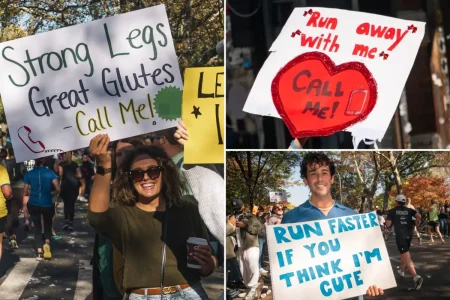The Growing Disconnect Between Young Americans and Nature
In an age of digital connectivity, American Gen Z adults are experiencing a significant disconnect from the natural world, spending about 25% less time outdoors than their Gen X counterparts. According to a recent survey of 2,000 adults, the average Gen Z individual spends just 49 minutes outside on weekdays—and often that’s merely for commuting purposes. This stark contrast with Gen X adults, who average 65 minutes of daily outdoor time, highlights a growing generational divide in our relationship with nature. Perhaps most concerning is that 67% of Gen Z respondents admitted they could go multiple days without stepping outside their homes. When asked why they stay indoors, many cited inclement weather (25%), busy schedules (16%), and notably, a discomfort with being alone outdoors (16%). This reluctance to experience solitude in nature represents a fundamental shift in how younger generations view the outdoors—not as a place for reflection and rejuvenation, but as a potentially boring or uncomfortable experience without digital stimulation or social company.
This troubling trend extends to the next generation as well, with children today averaging just 56 minutes outdoors daily. While half of parents believe their children spend more time in nature than they did at the same age, a significant 25% worry their kids are experiencing even less outdoor time than previous generations. The culprit for this nature deficit isn’t surprising—36% of parents identified excessive screen time as the primary barrier keeping children indoors. The urban-rural divide also plays a significant role, with two-thirds of city residents reporting they could spend days without leaving home. These statistics paint a picture of a society increasingly disconnected from the natural world, where outdoor experiences are becoming optional rather than essential components of daily life, especially for younger Americans who have grown up in a digital-first environment where nature often feels distant or inaccessible.
The study, commissioned by Super, Natural British Columbia (the official tourism body of British Columbia), has led to the creation of a free digital tool called “The Nature Rating.” This innovative resource allows users to discover the amount of nature present in films, shows, books, and songs, aiming to inspire people to seek nature in their everyday lives. The tool responds to research findings published in Perspectives on Psychological Science, which documented a steady decline in references to nature across songs, books, and films since the 1950s. This cultural shift away from nature in our media consumption both reflects and reinforces our changing relationship with the natural world, creating a concerning feedback loop where reduced exposure to nature-focused content further diminishes real-world engagement with outdoor spaces.
Dr. Pelin Kesebir, a Social Psychologist working with the tourism board, emphasizes the significance of this decline in nature-focused content: “Art, media, and culture both reflect and shape our lived experiences, so the nature deficit in the content we consume signals a broader and concerning disconnect from the natural world.” This perspective highlights the powerful relationship between what we consume culturally and how we behave in the real world. When nature disappears from our stories, songs, and screens, it also begins to fade from our lived experiences and values. The development of tools like The Nature Rating represents an attempt to interrupt this cycle by encouraging a healthier “nature diet” in our media consumption, potentially serving as a catalyst for inspiring greater real-world engagement with natural environments.
Despite the concerning trends, the research reveals a promising opportunity: 67% of respondents reported that seeing the natural world on their screens directly inspires them to get outside. This suggests that media consumption doesn’t necessarily have to compete with outdoor experiences—it can actually motivate them. Social media (36%), YouTube (35%), and television shows (32%) were identified as the primary channels driving Americans’ inspiration to engage with nature. Popular shows like Yellowstone (21%), Our Planet (16%), and Survivor (14%) were named as particularly influential in sparking interest in the outdoors. However, 46% of those surveyed still feel there’s a significant nature deficit in the media and culture they consume, indicating an unfulfilled appetite for more nature-focused content that could potentially inspire greater real-world engagement.
Maya Lange from Super, Natural British Columbia summarizes the challenge and opportunity: “The benefits of spending time in nature are widely known, but modern life can make it difficult, with our research showing that we’re becoming more disconnected from nature with each generation.” This disconnection represents a complex societal issue with implications for both physical and mental health. While there’s no single solution to inspiring people to improve their relationship with nature, encountering its wonder through enjoyable content can spark a genuine desire to seek out real-life experiences. Tools like The Nature Rating aim to help people take a first step—by making them more conscious of nature in the content they consume, they might be inspired to step outside and develop a stronger connection to the natural world. As our society continues to evolve in increasingly digital directions, finding these bridges between virtual and natural experiences may become essential for maintaining our fundamental human connection to the outdoors.















